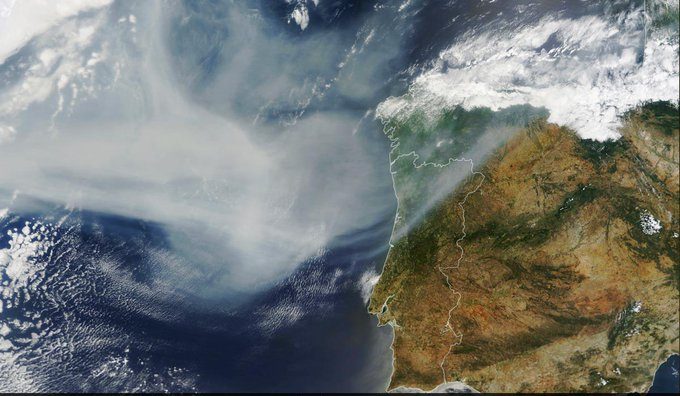The unprecedented Canadian wildfire season of 2023 has made headlines globally as it surpasses all records, releasing a staggering 160 million tonnes of carbon. As the smoke from these devastating fires reaches Europe, it becomes crucial to understand the factors that ignited this catastrophic event.
Eastern and western Canada have witnessed extensive wildfires, surpassing a combined area of 76,000 square kilometers (29,000 square miles). This exceeds the cumulative burned area of the years 2016, 2019, 2020, and 2022.
The emissions from these fires have reached an all-time high, surpassing the previous record set in 2014, with 140 million tonnes of carbon. Eastern Canada fires primarily contribute to this emissions surge, while Alberta and British Columbia fall short of record-setting levels.
The carbon released by the wildfires is equivalent to the annual carbon dioxide emissions from Indonesia’s fossil fuel burning. Canada’s boreal forests store over 200 billion tonnes of carbon, acting as a crucial carbon sink. However, when these forests burn, they release stored carbon into the atmosphere, exacerbating global warming and creating a dangerous feedback loop that increases fire susceptibility.
The Canadian wildfire smoke has enveloped major urban centers, such as New York City and Toronto, with an eerie orange tint. Public health authorities have issued air quality alerts, cautioning residents to stay indoors.
Wildfire smoke is associated with higher rates of heart attacks, strokes, and respiratory conditions. As the plume crosses the North Atlantic, Europe is likely to experience hazy skies and vivid sunsets, though surface air quality is expected to remain unaffected.
How did the 2023 wildfires start?
The wildfires were primarily ignited by a combination of factors, including lightning strikes and human activities. The Atlantic region experienced low snowfall and an abnormally dry spring, creating favorable conditions for fire spread. Additionally, the aftermath of Hurricane Fiona and infestations of forest pests may have contributed to an abundance of fuel for the fires. Investigations are ongoing to determine the extent of these factors.
The wildfires continue to ravage multiple provinces, with numerous new fires reported daily. Poor air quality persists across North America, including parts of the United States, as a result of the smoke. The intensification of wildfires is a reflection of the escalating climate crisis, characterized by more frequent and severe droughts and heatwaves. Addressing climate change becomes imperative to mitigate the future occurrence and impact of such catastrophic events.







